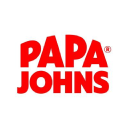/ factorpad.com / stocks / f86qps.html
An ad-free and cookie-free website.
Our quantitative data points are meant to provide a high-level understanding of factors in equity risk models for Papa John'S Intl Inc. Portfolio managers use these models to forecast risk, optimize portfolios and review performance.
We show how PZZA stock compares to 2,000+ US-based stocks, and to peers in the Accommodation and Food Services sector and Food Service Contractors industry.
Please do not consider this data as investment advice. Data is downloaded from sources we deem reliable, but errors may occur.
 Papa John's International, Inc. opened its doors in 1984 with one goal in mind: BETTER INGREDIENTS. BETTER PIZZA. Papa John's believes that using high quality ingredients leads to superior quality pizzas. Its original dough is made of only six ingredients and is fresh, never frozen. Papa John's tops its pizzas with real cheese made from mozzarella, pizza sauce made with vine-ripened tomatoes that go from vine to can in the same day and meat free of fillers. It was the first national pizza delivery chain to announce the removal of artificial flavors and synthetic colors from its entire food menu. Papa John's is headquartered in Louisville, Ky. and is the world's third largest pizza delivery company with 5,360 restaurants in 48 countries and territories as of September 27, 2020.
Papa John's International, Inc. opened its doors in 1984 with one goal in mind: BETTER INGREDIENTS. BETTER PIZZA. Papa John's believes that using high quality ingredients leads to superior quality pizzas. Its original dough is made of only six ingredients and is fresh, never frozen. Papa John's tops its pizzas with real cheese made from mozzarella, pizza sauce made with vine-ripened tomatoes that go from vine to can in the same day and meat free of fillers. It was the first national pizza delivery chain to announce the removal of artificial flavors and synthetic colors from its entire food menu. Papa John's is headquartered in Louisville, Ky. and is the world's third largest pizza delivery company with 5,360 restaurants in 48 countries and territories as of September 27, 2020.
Many of the following risk metrics are standardized and transformed into quantitative factors in institutional-level risk models.
Rankings below represent percentiles from 1 to 100, with 1 being the lowest rating of risk.
Stocks with higher beta exhibit higher sensitivity to the ups and downs in the market. (↑↑)
Stocks with higher market capitalization often have lower risk. (↑↓)
Higher average daily dollar volume over the past 30 days implies lower liquidity risk. (↑↓)
Higher price momentum stocks, aka recent winners, equate to lower risk for many investors. (↑↓)
Style risk factors often include measures of profitability and payout levels.
Companies with higher earnings generally provide lower risk. (↑↓)
Companies with higher dividend yields, if sustaintable, are perceived to have lower risk. (↑↓)
/ factorpad.com / stocks / f86qps.html
A newly-updated free resource. Connect and refer a friend today.